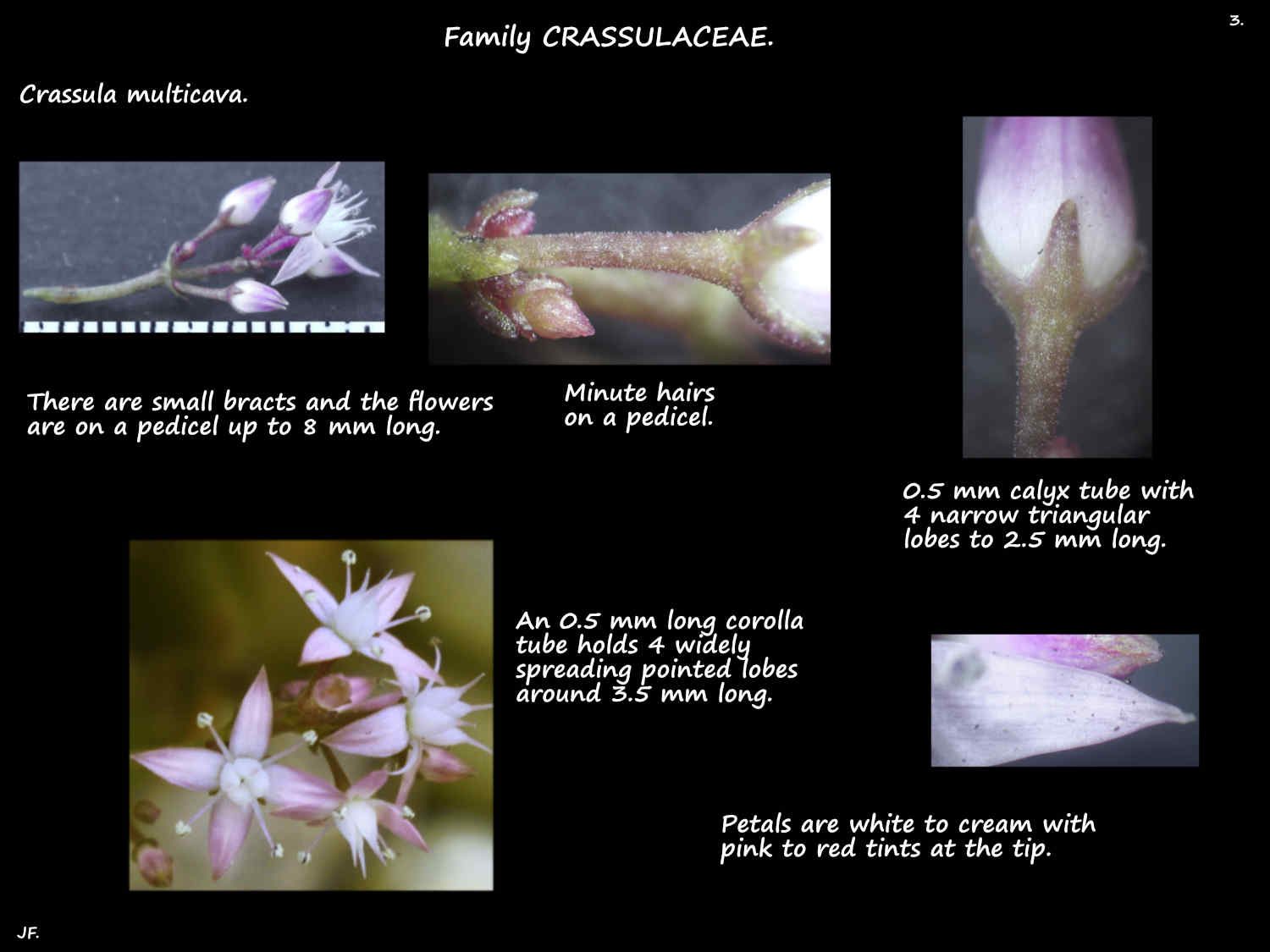Crassula multicava.
Fairy Crassula, from South Africa is in Family Crassulaceae > Subfamily Crassuloideae.
Synonyms include Crassula multicava subsp. multicava and Crassula quadrifida.
A perennial succulent plant around 15 to 30 cm high.
The soft stems can be erect or prostrate then erect.
Stems, usually under 40 cm long have few branches and prostrate stems do not root at the nodes.
The opposite leaves are on a petiole up to 2 cm long with the bases joined around the stem.
The broadly elliptic to rounded blades, up to 3.5 or 4 cm long have a smooth edge.
The edges of the flat blades may curve under slightly.
Depending on the amount of sun they are light, yellowish or dark green.
The dark green to red dots on the upper surface are pores for water exchange (hydathodes).
Branched inflorescences, held well above the leaves are up to 40 cm high.
Inflorescence stalks (peduncles) are up to around 8 cm long.
There may be small bracts and flowers are on pedicels up to 8 mm long.
The 4 sepals, 2 mm long are fused at the base for 0.5 mm with wide pointed lobes.
The reddish-green fleshy calyx has faint ridges.
The petals are fused at the base for 0.5 mm with 4 lobes around 3.5 mm long.
The widely spreading lobes are cream to white with pink tints at the tip.
The pink is more obvious in the buds.
The 4 free stamens alternate with the petals and are opposite the sepals.
The purple anthers release white pollen through longitudinal slits.
There is a small white to cream nectary (scale) at the base of each carpel.
The ovary consists of 4 free carpels tapering to a style with a tiny stigma.
Each carpel has 10 to 20 ovules.
The fruit are a 0.4 mm long follicle but seeds are not often seen.
Small plantlets can form in the bract axils of old inflorescences.
Crassula multicava subs. floribunda, a subspecies, is a more erect plant that may have hairs on some parts.
Flowers have parts in 5’s and it produces no plantlets.
Crassula multicava subsp. multicava, a synonym for C. multicava is sometimes recognised as a subspecies but their descriptions are basically the same.
There are also cultivars such as ‘Purple Dragon’ with leaves having a purple lower surface and another with variegated leaves.
J.F.






